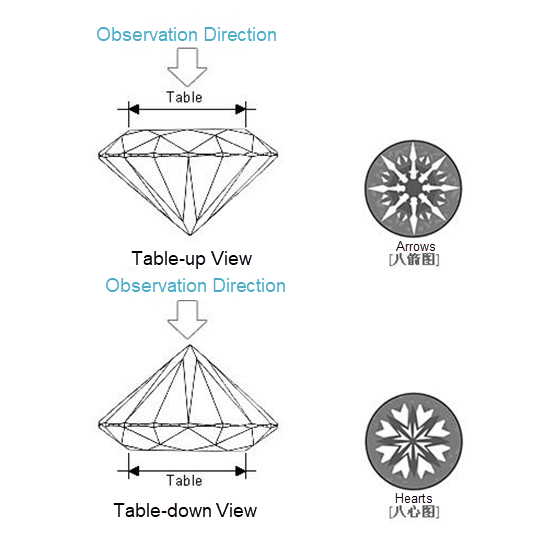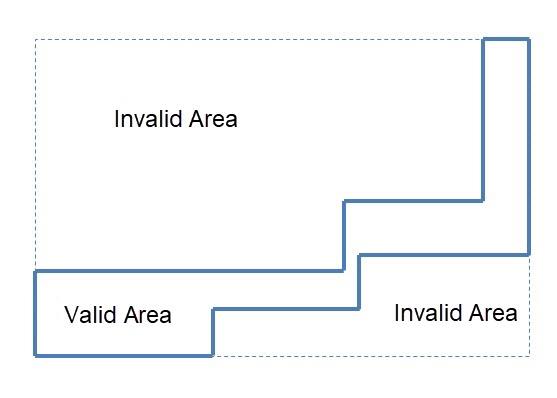By digoal
Our article "Optimize Spatial Searches in PostgreSQL Using ST_Contains and ST_Within" describes a method for reducing CPU usage during searches. This method splits a long-strip geometry (polygon) that accounts for a small area proportion in its bounding box (covering a relatively small area in its bounding box) into a spatial geometries collection. After the split, the new geometries account for higher area proportions in their bounding boxes than the original long-strip polygon, significantly reducing the number of data blocks to be scanned and increasing the search hits.
The key to this method is to split the irregularly shaped polygon. PostGIS provides a split function in this regard, but it can only split a geometry into two parts. This article describes a method that allows splitting a geometry into as many parts as needed. All you have to do is to enter the target geometry to be split, the number of horizontal cuts, the number of vertical cuts, and the area proportion above which cutting is not performed.
Does it sound like cutting a Hearts and Arrows diamond?

The purpose of geometry split is to reduce the invalid areas in a geometry's bounding box. In the following figure, the invalid area is too large and seriously affects the database's search performance.

1) Enter the target geometry to be split, the number of horizontal cuts, the number of vertical cuts, and the area ratio to stop splitting.
2) Calculate the target geometry's area.
3) Determine the target geometry's bounding box and calculate the bounding box's area.
4) Determine whether it is necessary to split the geometry. If it is necessary to split the geometry, determine the cutting lines first. Then cut the geometry.
5) Determine the geometry collection obtained through the split operation.
6) Convert the geometry collection into a geo array.
create or replace function split_geo(
i_geo geometry, -- 被切割的目标对象
i_srid int, -- SRID
i_x int2, -- X方向切多少刀
i_y int2, -- Y方向切多少刀
i_aratio float4 -- 面积占比阈值,高于它则不切割
)
returns geometry[] as $$
declare
res geometry[]; -- 结果
tmp_geo geometry; -- 切割后的临时对象(geometry collection)
split_geos geometry[]; -- 切割线数组
split_line geometry; -- 线段
v_area_obj float8; -- 目标对象面积
v_area_box float8; -- 目标对象的bound box的面积
v_xmin float8 := ST_XMin(i_geo); -- 目标对象BOUND BOX,XMIN
v_ymin float8 := ST_YMin(i_geo); -- 目标对象BOUND BOX,YMIN
v_xmax float8 := ST_XMax(i_geo); -- 目标对象BOUND BOX,XMAX
v_ymax float8 := ST_YMax(i_geo); -- 目标对象BOUND BOX,YMAX
v_box geometry; -- 目标对象的BOUND BOX
x_geo geometry; -- 分解geometry collection临时对象
begin
-- 求边界
v_box := st_setsrid(ST_MakeBox2D(st_makepoint(v_xmin,v_ymin), st_makepoint(v_xmax,v_ymax)),i_srid);
-- 求面积
v_area_obj := st_area(i_geo);
v_area_box := st_area(v_box);
-- split 前的空间占比
raise notice '%', (v_area_obj/v_area_box);
-- 计算面积占比,判断是否需要切割
if (v_area_obj/v_area_box) > i_aratio then
-- 大于面积比,不切割
return array[i_geo];
else
-- 计算切割线段X位点
for i in 1..i_x
loop
split_geos := coalesce
(
array_append(split_geos, st_setsrid(st_makeline(st_makepoint(v_xmin+i*((v_xmax-v_xmin)/(i_x+1)), v_ymin), st_makepoint(v_xmin+i*((v_xmax-v_xmin)/(i_x+1)), v_ymax)), i_srid))
,
array[st_setsrid(st_makeline(st_makepoint(v_xmin+i*((v_xmax-v_xmin)/(i_x+1)), v_ymin), st_makepoint(v_xmin+i*((v_xmax-v_xmin)/(i_x+1)), v_ymax)), i_srid)]
);
end loop;
-- 计算切割线段Y位点
for i in 1..i_y
loop
split_geos := coalesce
(
array_append(split_geos, st_setsrid(st_makeline(st_makepoint(v_xmin, v_ymin+i*((v_ymax-v_ymin)/(i_y+1))), st_makepoint(v_xmax, v_ymin+i*((v_ymax-v_ymin)/(i_y+1)))), i_srid))
,
array[st_setsrid(st_makeline(st_makepoint(v_xmin, v_ymin+i*((v_ymax-v_ymin)/(i_y+1))), st_makepoint(v_xmax, v_ymin+i*((v_ymax-v_ymin)/(i_y+1)))), i_srid)]
);
end loop;
-- 切割
foreach split_line in array split_geos
loop
tmp_geo := coalesce
(
st_split(tmp_geo, split_line)
,
st_split(i_geo, split_line)
);
end loop;
end if;
-- 将geometry collection转换为geometry数组
for i in 1..ST_NumGeometries(tmp_geo)
loop
res := coalesce(array_append(res, ST_GeometryN(tmp_geo, i)), array[ST_GeometryN(tmp_geo, i)]);
end loop;
-- split 后的空间占比
v_area_obj := 0;
v_area_box := 0;
foreach x_geo in array res
loop
v_area_obj := v_area_obj + st_area(x_geo);
v_area_box := v_area_box + st_area(st_setsrid(ST_MakeBox2D(st_makepoint(st_xmin(x_geo),st_ymin(x_geo)), st_makepoint(st_xmax(x_geo),st_ymax(x_geo))),i_srid));
end loop;
-- split 后的空间占比
raise notice '%', (v_area_obj/v_area_box);
return res;
end;
$$ language plpgsql strict immutable; 1) If two horizontal cuts and two vertical cuts are made, we can expect at most nine geometries after the split. If a cut fails to fall on a valid location, no parts are returned. Therefore, the actual number of new geometries may be smaller than nine.
select st_astext(
unnest(
split_geo(
st_setsrid(st_makepolygon(ST_GeomFromText('LINESTRING(0 0,1 0,1 2.5,6 2.5,6 4,7 4,7 5,5 5,5 3,0 3,0 0)')), 4326),
4326::int4,
2::int2,
2::int2,
0.9::float4
)));
NOTICE: 0.242857142857143
NOTICE: 0.818181818181818
st_astext
-------------------------------------------------------------------------------------------------------------------------
POLYGON((2.33333333333333 2.5,1 2.5,1 1.66666666666667,0 1.66666666666667,0 3,2.33333333333333 3,2.33333333333333 2.5))
POLYGON((1 1.66666666666667,1 0,0 0,0 1.66666666666667,1 1.66666666666667))
POLYGON((2.33333333333333 3,4.66666666666667 3,4.66666666666667 2.5,2.33333333333333 2.5,2.33333333333333 3))
POLYGON((4.66666666666667 3,5 3,5 3.33333333333333,6 3.33333333333333,6 2.5,4.66666666666667 2.5,4.66666666666667 3))
POLYGON((5 3.33333333333333,5 5,7 5,7 4,6 4,6 3.33333333333333,5 3.33333333333333))
(5 rows) Before the split, the original geometry accounts for an area proportion of 24%. After the split, the new geometries account for an area proportion of 82%, which significantly reduces the number of data blocks to be scanned.
2) If two horizontal cuts and two vertical cuts are made, we can expect at most nine geometries after the split.
Before the split, the original geometry accounts for an area proportion of 24%. After the split, the new geometries account for an area proportion of 98%, even better.
postgres=# select st_astext(
unnest(
split_geo(
st_setsrid(st_makepolygon(ST_GeomFromText('LINESTRING(0 0,1 0,1 2.5,6 2.5,6 4,7 4,7 5,5 5,5 3,0 3,0 0)')), 4326),
4326::int4,
4::int2,
4::int2,
0.9::float4
)));
NOTICE: 0.242857142857143
NOTICE: 0.977011494252874
st_astext
----------------------------------------------------
POLYGON((1.4 2.5,1 2.5,1 2,0 2,0 3,1.4 3,1.4 2.5))
POLYGON((1 2,1 1,0 1,0 2,1 2))
POLYGON((1 1,1 0,0 0,0 1,1 1))
POLYGON((1.4 3,2.8 3,2.8 2.5,1.4 2.5,1.4 3))
POLYGON((2.8 3,4.2 3,4.2 2.5,2.8 2.5,2.8 3))
POLYGON((4.2 3,5 3,5.6 3,5.6 2.5,4.2 2.5,4.2 3))
POLYGON((5 3,5 4,5.6 4,5.6 3,5 3))
POLYGON((5 4,5 5,5.6 5,5.6 4,5 4))
POLYGON((5.6 5,7 5,7 4,6 4,5.6 4,5.6 5))
POLYGON((6 4,6 3,5.6 3,5.6 4,6 4))
POLYGON((6 3,6 2.5,5.6 2.5,5.6 3,6 3))
(11 rows) Before the geometry split, 1,648 data blocks are scanned, and 26,590 invalid data records are filtered out.
explain (analyze,verbose,timing,costs,buffers)
select * from f where st_within(pos, st_setsrid(st_makepolygon(ST_GeomFromText('LINESTRING(0 0,1 0,1 2.5,6 2.5,6 4,7 4,7 5,5 5,5 3,0 3,0 0)')), 4326));
Index Scan using idx_f on public.f (cost=0.42..15026.72 rows=3333 width=40) (actual time=1.519..35.773 rows=8491 loops=1)
Output: id, pos
Index Cond: ('0103000020E6100000010000000B00000000000000000000000000000000000000000000000000F03F0000000000000000000000000000F03F000000000000044000000000000018400000000000000440000000000000184000000000000010400000000000001C4000000000000010400000000000001C40000000000000144000000000000014400000000000001440000000000000144000000000000008400000000000000000000000000000084000000000000000000000000000000000'::geometry ~ f.pos)
Filter: _st_contains('0103000020E6100000010000000B00000000000000000000000000000000000000000000000000F03F0000000000000000000000000000F03F000000000000044000000000000018400000000000000440000000000000184000000000000010400000000000001C4000000000000010400000000000001C40000000000000144000000000000014400000000000001440000000000000144000000000000008400000000000000000000000000000084000000000000000000000000000000000'::geometry, f.pos)
Rows Removed by Filter: 26590
Buffers: shared hit=1648
Planning time: 0.274 ms
Execution time: 36.212 ms After the geometry split, 610 data blocks are scanned, and 1,932 invalid data records are filtered out.
explain (analyze,verbose,timing,costs,buffers)
select * from f where st_within(pos, st_setsrid(st_makepolygon(ST_GeomFromText('LINESTRING(2.33333333333333 2.5,1 2.5,1 1.66666666666667,0 1.66666666666667,0 3,2.33333333333333 3,2.33333333333333 2.5)')), 4326))
union all
select * from f where st_within(pos, st_setsrid(st_makepolygon(ST_GeomFromText('LINESTRING(1 1.66666666666667,1 0,0 0,0 1.66666666666667,1 1.66666666666667)')), 4326))
union all
select * from f where st_within(pos, st_setsrid(st_makepolygon(ST_GeomFromText('LINESTRING(2.33333333333333 3,4.66666666666667 3,4.66666666666667 2.5,2.33333333333333 2.5,2.33333333333333 3)')), 4326))
union all
select * from f where st_within(pos, st_setsrid(st_makepolygon(ST_GeomFromText('LINESTRING(4.66666666666667 3,5 3,5 3.33333333333333,6 3.33333333333333,6 2.5,4.66666666666667 2.5,4.66666666666667 3)')), 4326))
union all
select * from f where st_within(pos, st_setsrid(st_makepolygon(ST_GeomFromText('LINESTRING(5 3.33333333333333,5 5,7 5,7 4,6 4,6 3.33333333333333,5 3.33333333333333)')), 4326))
;
Append (cost=0.42..75300.24 rows=16665 width=40) (actual time=0.113..11.690 rows=8491 loops=1)
Buffers: shared hit=610
-> Index Scan using idx_f on public.f (cost=0.42..15026.72 rows=3333 width=40) (actual time=0.113..3.365 rows=2053 loops=1)
Output: f.id, f.pos
Index Cond: ('0103000020E61000000100000007000000A3AAAAAAAAAA02400000000000000440000000000000F03F0000000000000440000000000000F03FBAAAAAAAAAAAFA3F0000000000000000BAAAAAAAAAAAFA3F00000000000000000000000000000840A3AAAAAAAAAA02400000000000000840A3AAAAAAAAAA02400000000000000440'::geometry ~ f.pos)
Filter: _st_contains('0103000020E61000000100000007000000A3AAAAAAAAAA02400000000000000440000000000000F03F0000000000000440000000000000F03FBAAAAAAAAAAAFA3F0000000000000000BAAAAAAAAAAAFA3F00000000000000000000000000000840A3AAAAAAAAAA02400000000000000840A3AAAAAAAAAA02400000000000000440'::geometry, f.pos)
Rows Removed by Filter: 1142
Buffers: shared hit=189
-> Index Scan using idx_f on public.f f_1 (cost=0.42..15026.72 rows=3333 width=40) (actual time=0.084..1.734 rows=1699 loops=1)
Output: f_1.id, f_1.pos
Index Cond: ('0103000020E61000000100000005000000000000000000F03FBAAAAAAAAAAAFA3F000000000000F03F0000000000000000000000000000000000000000000000000000000000000000BAAAAAAAAAAAFA3F000000000000F03FBAAAAAAAAAAAFA3F'::geometry ~ f_1.pos)
Filter: _st_contains('0103000020E61000000100000005000000000000000000F03FBAAAAAAAAAAAFA3F000000000000F03F0000000000000000000000000000000000000000000000000000000000000000BAAAAAAAAAAAFA3F000000000000F03FBAAAAAAAAAAAFA3F'::geometry, f_1.pos)
Buffers: shared hit=92
-> Index Scan using idx_f on public.f f_2 (cost=0.42..15026.72 rows=3333 width=40) (actual time=0.075..1.283 rows=1158 loops=1)
Output: f_2.id, f_2.pos
Index Cond: ('0103000020E61000000100000005000000A3AAAAAAAAAA02400000000000000840AEAAAAAAAAAA12400000000000000840AEAAAAAAAAAA12400000000000000440A3AAAAAAAAAA02400000000000000440A3AAAAAAAAAA02400000000000000840'::geometry ~ f_2.pos)
Filter: _st_contains('0103000020E61000000100000005000000A3AAAAAAAAAA02400000000000000840AEAAAAAAAAAA12400000000000000840AEAAAAAAAAAA12400000000000000440A3AAAAAAAAAA02400000000000000440A3AAAAAAAAAA02400000000000000840'::geometry, f_2.pos)
Buffers: shared hit=74
-> Index Scan using idx_f on public.f f_3 (cost=0.42..15026.72 rows=3333 width=40) (actual time=0.095..1.214 rows=986 loops=1)
Output: f_3.id, f_3.pos
Index Cond: ('0103000020E61000000100000007000000AEAAAAAAAAAA12400000000000000840000000000000144000000000000008400000000000001440A3AAAAAAAAAA0A400000000000001840A3AAAAAAAAAA0A4000000000000018400000000000000440AEAAAAAAAAAA12400000000000000440AEAAAAAAAAAA12400000000000000840'::geometry ~ f_3.pos)
Filter: _st_contains('0103000020E61000000100000007000000AEAAAAAAAAAA12400000000000000840000000000000144000000000000008400000000000001440A3AAAAAAAAAA0A400000000000001840A3AAAAAAAAAA0A4000000000000018400000000000000440AEAAAAAAAAAA12400000000000000440AEAAAAAAAAAA12400000000000000840'::geometry, f_3.pos)
Rows Removed by Filter: 127
Buffers: shared hit=68
-> Index Scan using idx_f on public.f f_4 (cost=0.42..15026.72 rows=3333 width=40) (actual time=0.105..3.331 rows=2595 loops=1)
Output: f_4.id, f_4.pos
Index Cond: ('0103000020E610000001000000070000000000000000001440A3AAAAAAAAAA0A40000000000000144000000000000014400000000000001C4000000000000014400000000000001C400000000000001040000000000000184000000000000010400000000000001840A3AAAAAAAAAA0A400000000000001440A3AAAAAAAAAA0A40'::geometry ~ f_4.pos)
Filter: _st_contains('0103000020E610000001000000070000000000000000001440A3AAAAAAAAAA0A40000000000000144000000000000014400000000000001C4000000000000014400000000000001C400000000000001040000000000000184000000000000010400000000000001840A3AAAAAAAAAA0A400000000000001440A3AAAAAAAAAA0A40'::geometry, f_4.pos)
Rows Removed by Filter: 663
Buffers: shared hit=187
Planning time: 0.397 ms
Execution time: 12.150 ms
(32 rows) PostgreSQL supports the ANY, SOME, and ALL (array) operators. Therefore, we can simplify the code to further reduce the number of data blocks to be scanned to 278 and the invalid data records to 1,932.
explain (analyze,verbose,timing,costs,buffers) select * from f where pos @ any(split_geo(
st_setsrid(st_makepolygon(ST_GeomFromText('LINESTRING(0 0,1 0,1 2.5,6 2.5,6 4,7 4,7 5,5 5,5 3,0 3,0 0)')), 4326),
4326::int4,
2::int2,
2::int2,
0.9::float4
))
and
st_within(pos, st_setsrid(st_makepolygon(ST_GeomFromText('LINESTRING(0 0,1 0,1 2.5,6 2.5,6 4,7 4,7 5,5 5,5 3,0 3,0 0)')), 4326));
NOTICE: 0.242857142857143
NOTICE: 0.818181818181818
Bitmap Heap Scan on public.f (cost=9.09..87.16 rows=17 width=40) (actual time=2.270..10.578 rows=8491 loops=1)
Output: id, pos
Recheck Cond: ((f.pos @ ANY ('{0103000020E61000000100000007000000ABAAAAAAAAAA02400000000000000440000000000000F03F0000000000000440000000000000F03FABAAAAAAAAAAFA3F0000000000000000ABAAAAAAAAAAFA3F00000000000000000000000000000840ABAAAAAAAAAA02400000000000000840ABAAAAAAAAAA02400000000000000440:0103000020E61000000100000005000000000000000000F03FABAAAAAAAAAAFA3F000000000000F03F0000000000000000000000000000000000000000000000000000000000000000ABAAAAAAAAAAFA3F000000000000F03FABAAAAAAAAAAFA3F:0103000020E61000000100000005000000ABAAAAAAAAAA02400000000000000840ABAAAAAAAAAA12400000000000000840ABAAAAAAAAAA12400000000000000440ABAAAAAAAAAA02400000000000000440ABAAAAAAAAAA02400000000000000840:0103000020E61000000100000007000000ABAAAAAAAAAA12400000000000000840000000000000144000000000000008400000000000001440ABAAAAAAAAAA0A400000000000001840ABAAAAAAAAAA0A4000000000000018400000000000000440ABAAAAAAAAAA12400000000000000440ABAAAAAAAAAA12400000000000000840:0103000020E610000001000000070000000000000000001440ABAAAAAAAAAA0A40000000000000144000000000000014400000000000001C4000000000000014400000000000001C400000000000001040000000000000184000000000000010400000000000001840ABAAAAAAAAAA0A400000000000001440ABAAAAAAAAAA0A40}'::geometry[])) AND ('0103000020E6100000010000000B00000000000000000000000000000000000000000000000000F03F0000000000000000000000000000F03F000000000000044000000000000018400000000000000440000000000000184000000000000010400000000000001C4000000000000010400000000000001C40000000000000144000000000000014400000000000001440000000000000144000000000000008400000000000000000000000000000084000000000000000000000000000000000'::geometry ~ f.pos))
Filter: _st_contains('0103000020E6100000010000000B00000000000000000000000000000000000000000000000000F03F0000000000000000000000000000F03F000000000000044000000000000018400000000000000440000000000000184000000000000010400000000000001C4000000000000010400000000000001C40000000000000144000000000000014400000000000001440000000000000144000000000000008400000000000000000000000000000084000000000000000000000000000000000'::geometry, f.pos)
Rows Removed by Filter: 1932
Heap Blocks: exact=133
Buffers: shared hit=278
-> Bitmap Index Scan on idx_f (cost=0.00..9.09 rows=50 width=0) (actual time=2.244..2.244 rows=10423 loops=1)
Index Cond: ((f.pos @ ANY ('{0103000020E61000000100000007000000ABAAAAAAAAAA02400000000000000440000000000000F03F0000000000000440000000000000F03FABAAAAAAAAAAFA3F0000000000000000ABAAAAAAAAAAFA3F00000000000000000000000000000840ABAAAAAAAAAA02400000000000000840ABAAAAAAAAAA02400000000000000440:0103000020E61000000100000005000000000000000000F03FABAAAAAAAAAAFA3F000000000000F03F0000000000000000000000000000000000000000000000000000000000000000ABAAAAAAAAAAFA3F000000000000F03FABAAAAAAAAAAFA3F:0103000020E61000000100000005000000ABAAAAAAAAAA02400000000000000840ABAAAAAAAAAA12400000000000000840ABAAAAAAAAAA12400000000000000440ABAAAAAAAAAA02400000000000000440ABAAAAAAAAAA02400000000000000840:0103000020E61000000100000007000000ABAAAAAAAAAA12400000000000000840000000000000144000000000000008400000000000001440ABAAAAAAAAAA0A400000000000001840ABAAAAAAAAAA0A4000000000000018400000000000000440ABAAAAAAAAAA12400000000000000440ABAAAAAAAAAA12400000000000000840:0103000020E610000001000000070000000000000000001440ABAAAAAAAAAA0A40000000000000144000000000000014400000000000001C4000000000000014400000000000001C400000000000001040000000000000184000000000000010400000000000001840ABAAAAAAAAAA0A400000000000001440ABAAAAAAAAAA0A40}'::geometry[])) AND ('0103000020E6100000010000000B00000000000000000000000000000000000000000000000000F03F0000000000000000000000000000F03F000000000000044000000000000018400000000000000440000000000000184000000000000010400000000000001C4000000000000010400000000000001C40000000000000144000000000000014400000000000001440000000000000144000000000000008400000000000000000000000000000084000000000000000000000000000000000'::geometry ~ f.pos))
Buffers: shared hit=145
Planning time: 2.828 ms
Execution time: 11.024 ms
(12 rows)ST_Subdivide is also a split function that splits a spatial geometry into a collection of spatial geometries.
1) After the split, the valid area proportion is increased. This reduces the I/Os and the CPU usage caused by invalid data scanning and significantly improves the search performance.
2) Note that if the geometry is split into too many new ones, the non-leaf nodes of the GiST index created on the bounding boxes of these new geometries may be repeatedly scanned. However, the overhead can be ignored if most of these nodes can be found in the cache.
The splitting methods described in this article can be further improved. We encourage you to share your ideas with us.
Optimize Spatial Searches in PostgreSQL Using ST_Contains and ST_Within
PostgreSQL Best Practices: Overcoming Ride-Hailing Conflicts Arising in a Trip Dispatch System
digoal - February 14, 2021
digoal - January 21, 2021
digoal - June 26, 2019
digoal - December 21, 2020
digoal - December 18, 2020
digoal - December 18, 2020
 PolarDB for PostgreSQL
PolarDB for PostgreSQL
Alibaba Cloud PolarDB for PostgreSQL is an in-house relational database service 100% compatible with PostgreSQL and highly compatible with the Oracle syntax.
Learn More Database for FinTech Solution
Database for FinTech Solution
Leverage cloud-native database solutions dedicated for FinTech.
Learn More Oracle Database Migration Solution
Oracle Database Migration Solution
Migrate your legacy Oracle databases to Alibaba Cloud to save on long-term costs and take advantage of improved scalability, reliability, robust security, high performance, and cloud-native features.
Learn More Database Migration Solution
Database Migration Solution
Migrating to fully managed cloud databases brings a host of benefits including scalability, reliability, and cost efficiency.
Learn MoreMore Posts by digoal